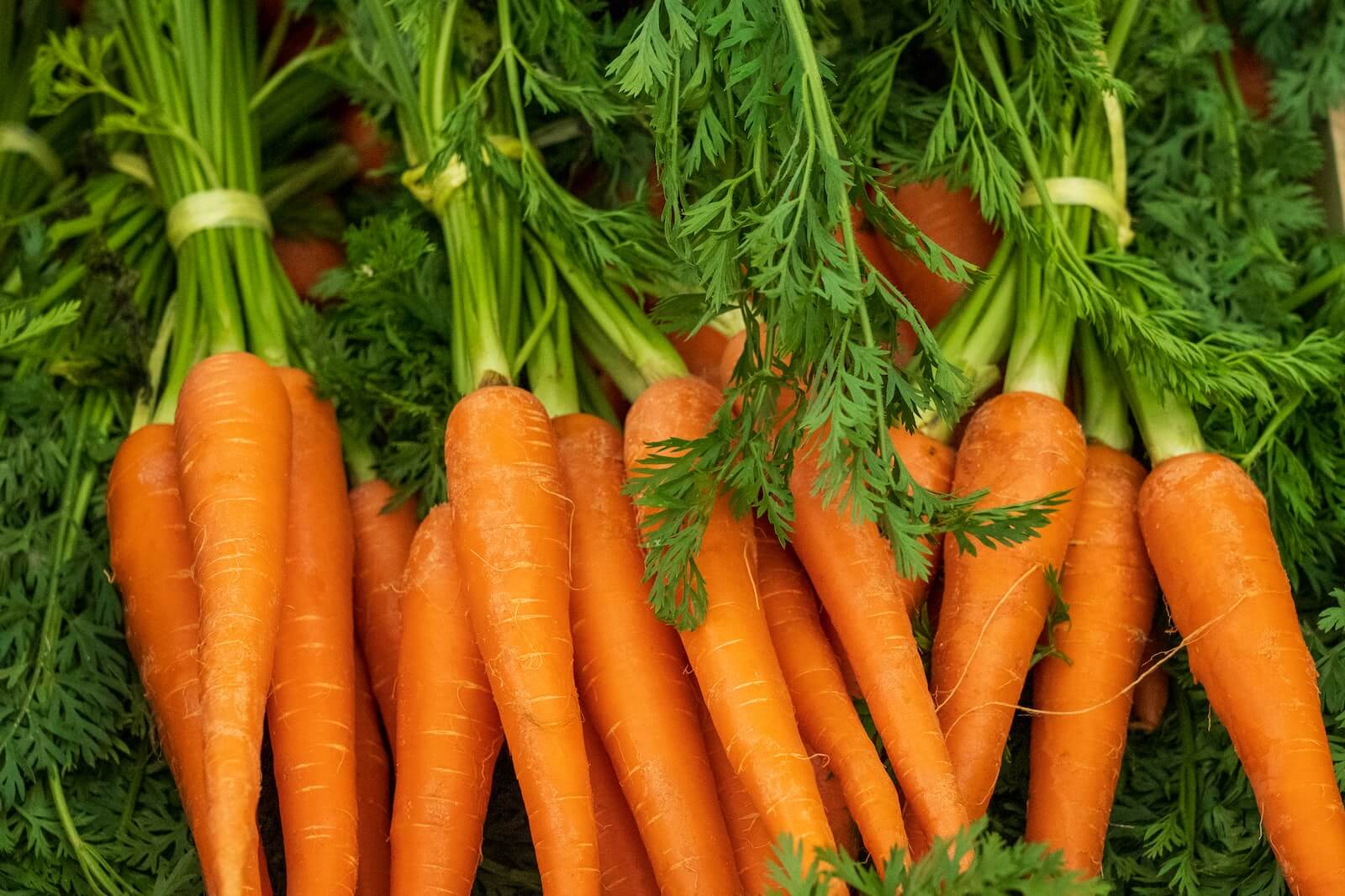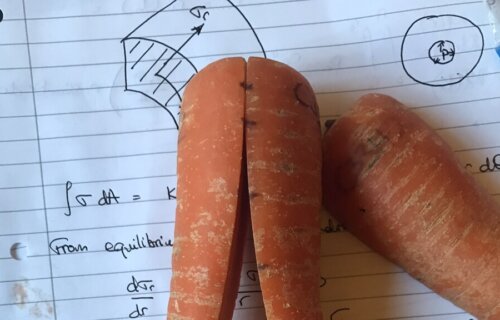BATH, United Kingdom — Who doesn’t love a crunchy carrot? There’s a reason they’re one of the most popular vegetables. However, no one loves it when the popular veggie gets dry and curly after chopping, and someone doesn’t eat them in time. Now, researchers from the University of Bath are revealing the secret science of prepping carrots and explaining what makes them curl up.
Nguyen Vo-Bui, a mechanical engineering student, conducted this research as part of his final-year studies during the COVID-19 lockdowns of 2021. Nguyen had to get creative with his experimentation without having access to labs, so he started working in his kitchen to identify the geometrical and environmental factors that influence the aging of carrots. He was able to characterize, analytically model, and verify the aging of over 100 Lancashire Nantes carrot halves that were cut lengthways by utilizing finite-element (FE) models that are typically used in structural engineering.
“One of the big challenges was to devise an experiment that could be done in a lockdown setting, without access to normal labs and equipment. To now be in a position to have this work published in an academic journal and potentially be used by the food industry is really rewarding,” says Nguyen.
The research reveals that residual stresses and dehydration were the two leading factors behind the curling carrot. Residual stresses describe the imbalance in stress that carrots undergo when cut lengthwise. The starchy outer layer is stiffer than the soft center, which is what causes this. Dehydration results in even more loss of stiffness, which exacerbates the curl.
“We have mathematically represented the curl of a cut carrot over time, and showed the factors that contribute to curling,” says Dr. Elise Pegg, a senior lecturer in Bath’s Department of Mechanical Engineering, and one of the research paper authors, in a media release.
“Our motivation was to look for ways to improve the sustainability of carrot processing and make them as long-lasting as possible. We have produced a methodology that a food producer could use to change their processes, reducing food waste and making packaging and transportation more efficient. Understanding the bending behavior in such systems can help us to design and manufacture products with higher durability.”

On the production side of things, carrots are known for their high production efficiency, yet their waste remains high. Around 25 to 30 percent of carrot waste occurs before processing and packaging simply because of deformities, mechanical damage, or infected areas. Fresh-cut carrots are not only a convenient food to have in your kitchen, but they help reduce food waste by making certain carrots usable that otherwise wouldn’t be. This research can possibly help the food industry to improve carrot processing.
“This project has inspired me to continue my studies at the University of Bath and I now study residual stresses in porous ferroelectric ceramics for my PhD,” says Nguyen, who collected around 66 pounds of carrots for his research with a suitcase.
You might be wondering what he did with all the leftovers! The good news is that carrots are extremely versatile, so he and his roommates were well-fed from all the carrot cake, Indian carrot dessert Gajar Ka Halwa, carrot pesto, and other vitamin A-rich dishes they prepared.
A Dietitian’s Take
This type of research is typically done from a food science lens, so it’s interesting to see from a purely mechanical perspective. Hopefully, this work positively influences the food industry and helps to reduce food waste by better understanding the mechanics of the vegetable.
Other commonly wasted produce includes bananas, apples, tomatoes, lettuce, sweet peppers, grapes, and more. Although the reasons for this may not be the same as for carrots, perhaps more mechanical studies can be done for different types of commonly wasted produce in order to better understand their properties and reduce waste.
On another note, recent online discourse has made the carrot out to be a bad guy. Many TikTok wellness gurus claim that they have “too much sugar,” when this isn’t the case. Carrots are considered starchy vegetables and are somewhat higher in naturally-occurring sugar than other vegetables. However, this isn’t an immediate cause for concern. They don’t have “too much.” Carrots are rich in fiber, beta carotene (which converts to vitamin A in the body), antioxidants, vitamin C, and various B vitamins.
The findings are published in the journal Royal Society Open Science.

So, will we be able to find out what can preserve carrots longer? Did I miss something in the article?